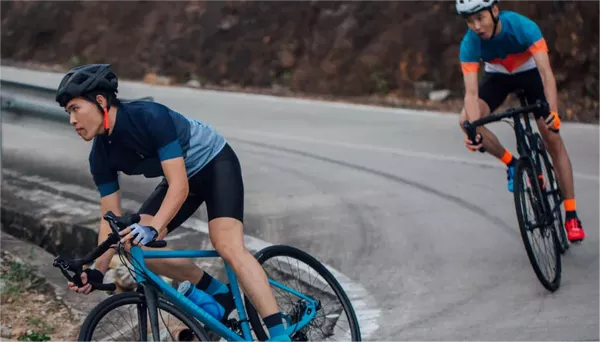Cycling is a popular form of cardiovascular exercise enjoyed by millions around the world. Beyond its cardiovascular benefits, cycling also engages various muscle groups, including the glutes. The gluteal muscles, comprised of the gluteus maximus, medius, and minimus, play a crucial role in lower body stability, power, and overall athletic performance. This article explores the relationship between cycling and glute muscle development, examining how this activity can contribute to building stronger and more defined glutes.
Anatomy of the Glute Muscles
Before delving into the effects of cycling on the glutes, it’s essential to understand the anatomy of these muscles:
- Gluteus Maximus: This is the largest of the gluteal muscles and is responsible for hip extension and external rotation.
- Gluteus Medius: Situated on the side of the hip, this muscle assists in hip abduction and stabilization of the pelvis during walking and running.
- Gluteus Minimus: Located beneath the gluteus medius, this muscle aids in hip abduction and internal rotation.
These muscles are essential for maintaining posture, supporting the hips, and facilitating movements such as walking, running, and jumping.
Glute Activation in Cycling
Cycling primarily targets the lower body muscles, including the glutes, quadriceps, hamstrings, and calves. The degree of glute activation during cycling can vary based on factors like pedal stroke technique, resistance level, and riding posture.
1. Pedal Stroke Technique: Efficient pedaling involves a full pedal stroke, where cyclists engage different muscles throughout each rotation. During the downstroke (pushing phase), the glutes are particularly active, especially the gluteus maximus, which extends the hip.
2. Uphill Cycling: Climbing hills or cycling against resistance requires greater activation of the glute muscles to generate power and overcome gravity. This can lead to more significant muscle recruitment and strengthening over time.
3. Sprinting and Intervals: Higher intensity cycling, such as sprinting or interval training, demands explosive power from the glutes, further contributing to muscle development.
While cycling predominantly targets the quadriceps and hamstrings, the glutes serve as stabilizers and synergists in these movements, contributing to overall lower body strength and endurance.
Impact on Glute Muscle Development
The relationship between cycling and glute muscle development is nuanced. While cycling primarily focuses on endurance and cardiovascular fitness, it can still contribute positively to gluteal strength and hypertrophy (muscle growth) under certain conditions:
1. Volume and Intensity: Long-duration rides or high-intensity intervals can challenge the glute muscles sufficiently to promote growth and adaptation. Varying cycling workouts with hills, sprints, and resistance can enhance muscle engagement and development.
2. Proper Form and Technique: Maintaining correct cycling posture and pedal stroke technique optimizes glute activation. Initiating the pedal stroke with the glutes and hamstrings rather than relying solely on the quadriceps can maximize muscle engagement.
3. Supplemental Exercises: Incorporating specific off-the-bike exercises like squats, lunges, and hip thrusts can complement cycling by targeting the glutes directly and promoting balanced muscle development.
Optimizing Glute Engagement While Cycling
To maximize glute muscle development through cycling, cyclists can adopt the following strategies:
1. Focus on Pedal Technique: Emphasize pulling up on the pedal during the upstroke to engage the hamstrings and glutes more effectively.
2. Incorporate Hill Climbs: Regularly include hill climbs in cycling workouts to increase glute activation and strength.
3. Interval Training: Integrate intervals of high-intensity cycling to challenge the glutes and promote muscle growth.
4. Off-Bike Exercises: Incorporate strength training exercises targeting the glutes, such as hip thrusts, deadlifts, and Bulgarian split squats, to supplement cycling workouts.
Conclusion
While cycling is primarily recognized for its cardiovascular benefits, it also offers advantages in lower body muscular development, including the glutes. By understanding the biomechanics of cycling and implementing targeted strategies, cyclists can optimize glute muscle engagement and promote strength and endurance. Whether cycling for fitness, recreation, or competition, integrating diverse workouts and maintaining proper technique can enhance overall lower body strength and contribute to well-rounded muscular development.

